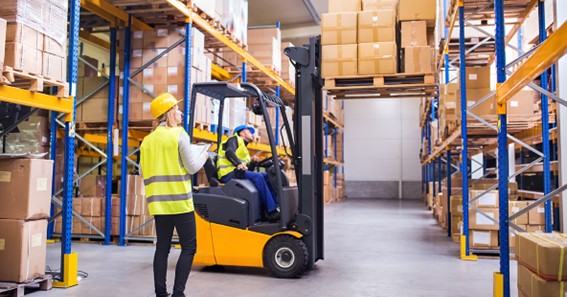Choosing the right WMS for your business is crucial. When choosing a WMS, it’s important to think about what your business needs, how scalable it is, how easy it is to use, how well it can be integrated, how well the vendor is known and supported, and how much it costs. Working with a reputable vendor who offers training and ongoing support can help you get the most out of your warehouse management system and avoid problems.
-
Poor Inventory Accuracy
Poor inventory accuracy can lead to stock-outs, overstocks, and incorrect orders, resulting in lost sales and dissatisfied customers. The nightmare is that you don’t know how much inventory you have or where it’s located, leading to chaos and delays in fulfilling orders.
To avoid having inaccurate inventory, you need a strong inventory management system that keeps track of stock levels in real-time and lets you see what you have in stock. Using technologies such as barcode scanners and RFID tags can help you track inventory more accurately and efficiently.
-
Inadequate Space Utilization
Inadequate space utilization can lead to inefficient workflows, crowded aisles, and safety hazards in your warehouse. The nightmare is that you run out of space, causing disruptions to your operations and making it challenging to store and retrieve items.
To avoid this nightmare, you need to ensure that you’re using your space effectively. Implement a warehouse layout that maximizes your available space and allows for efficient workflows. To make the most of the space you have, think about vertical storage solutions like pallet racks or mezzanine levels.
Click here – Can I pursue a Master’s Degree in Communication Design after graduating?
-
Inefficient Picking and Packing
Inefficient picking and packing processes can lead to delayed order fulfillment, incorrect orders, and dissatisfied customers. The nightmare is that you can’t keep up with the demand, leading to missed deadlines and lost sales.
To avoid inefficient picking and packing processes, you need to optimize your workflows. Install a warehouse management system that uses data and analytics to make picking and packing faster and easier. Use technologies like “pick to light” and “voice picking” to make your processes more accurate and quick.
-
Poor Warehouse Layout
A poor warehouse layout can lead to inefficient workflows, delays, and safety hazards in your warehouse. The nightmare is that you can’t find what you’re looking for, causing delays in fulfilling orders and creating safety hazards for your staff.
To avoid a poor warehouse layout, you need to plan your layout carefully. Think about how goods move through your warehouse and make sure the layout is set up to support efficient workflows. Ensure that your aisles are wide enough to accommodate your equipment and allow for safe movement of goods.
-
Inadequate Training for Staff
Inadequate training for your warehouse staff can lead to errors, delays, and safety hazards. The nightmare is that your staff doesn’t know how to use the equipment or follow the correct procedures, leading to costly mistakes.
To avoid inadequate training, invest in your staff’s training and development. Make sure they get full training on how to use the equipment and follow the right procedures. Regularly review your training programs to ensure that they remain up-to-date and effective.
-
Poor Communication
Poor communication can lead to misunderstandings, delays, and mistakes in your warehouse. The nightmare is that orders get mixed up, staff members are unclear about their responsibilities, and your customers are left dissatisfied.
To avoid poor communication, ensure that you have clear communication channels in place. Use a warehouse management system that allows for real-time communication between staff members and departments. Set up clear ways for people to talk to each other and make sure everyone knows what their roles and responsibilities are.
Click here – 10 Best Employee Scheduling Software To Run a Department More Like a Business
-
Poor Layout and Organization
A poorly laid-out and organized warehouse can quickly become a nightmare for warehouse managers. When things aren’t in order, are lost, or are stored in hard-to-reach places, it can slow down order fulfillment, decrease productivity, and cause more mistakes.
To avoid these problems, warehouse managers should set up the space in a way that makes it easy to move around, store things the right way, and get to things quickly. Using tools like storage racks, labeling systems, and automation technology can help improve warehouse organization and speed up processes.
-
Inadequate Training and Poor Communication
When warehouse workers don’t get enough training or don’t talk to each other well, it can cause big problems. Without proper training, staff may not know how to use equipment or follow safety protocols, leading to accidents and injuries.
Also, if people don’t talk to each other well, mistakes can happen, like the wrong items being picked up or shipped. This can cause delays and make customers unhappy
Final Words
Warehouse management nightmares can cause significant problems for businesses. But if businesses know what problems could happen and take steps to stop them, they can avoid these nightmares and keep things running smoothly. With the right tools, processes, and strategies in place, warehouse management can be an efficient and effective part of a successful supply chain.

